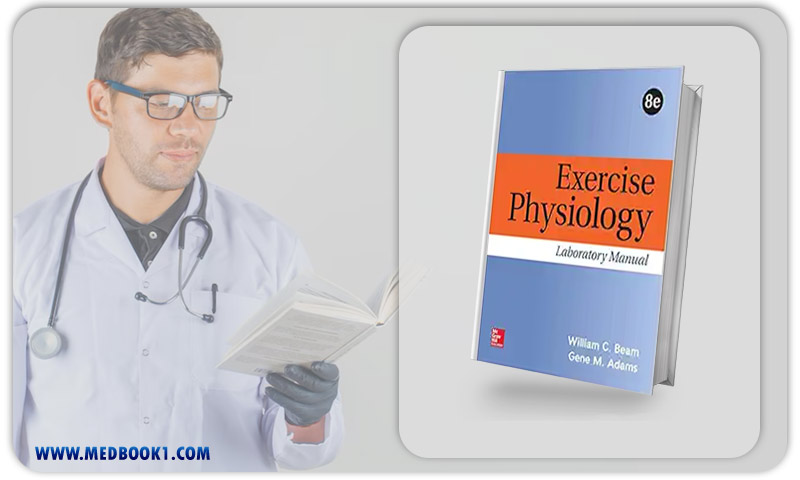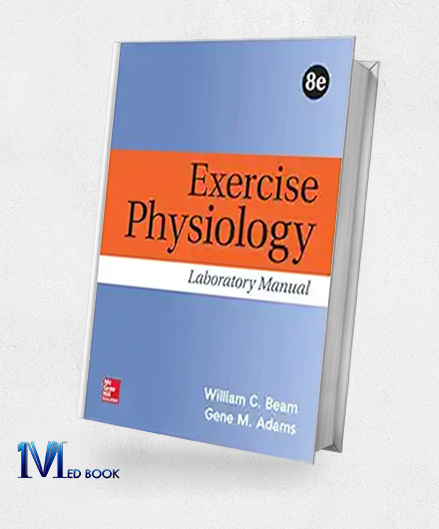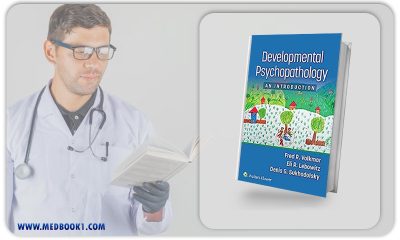Exercise Physiology Laboratory Manual, 8th Edition (Original PDF From Publisher)
Exercise Physiology Laboratory Manual, 8th Edition (Original PDF From Publisher)
| Edition |
8th |
|---|---|
| File Size |
12.1 MB |
| Format |
Publisher PDF |
| ISBN-10 |
1259913880 |
| ISBN-13 |
9781259913884 |
| Language |
English |
| Publisher |
McGraw Hill |
$178.11 Original price was: $178.11.$40.00Current price is: $40.00.
- The files will be sent to you via E-mail
- Once you placed your order, we will make sure that you receive the files as soon as possible
5/5
Description
Exercise Physiology Laboratory Manual, 8th Edition (Original PDF From Publisher)
1.1.Description
The study of the body’s reactions and modifications to physical activity is known as exercise physiology. In order to solidify theoretical knowledge in this discipline, practical experience is essential.
The Exercise Physiology Laboratory Manual, 8th Edition (Original PDF) is a complete tool that professors and students can use to conduct laboratory studies relating to exercise physiology in an organized manner. This handbook probably describes a set of hands-on activities intended to improve comprehension of important physiological topics through firsthand observation and data gathering.

Exercise Physiology Laboratory Manual, 8th Edition (Original PDF From Publisher)
A Useful Manual for Laboratory Research
The Exercise Physiology Laboratory Manual, 8th Edition, probably has a structured structure that leads students through a variety of laboratory exercises. Here’s a sample of what the handbook might include:
Essential Laboratory Techniques: The handbook may expose students to basic laboratory procedures and tools frequently used in exercise physiology before delving into particular activities. This could include using metabolic carts, spirometers, blood pressure cuffs, heart rate monitors, and other pertinent equipment properly.
Measuring Muscular Power and Strength: The study of exercise physiology looks into how exercise impacts muscle function. The handbook may contain lab exercises meant to gauge power output using jump tests and other techniques, as well as muscle strength using dynamometers.
Cardiorespiratory Responses to Exercise: The reactions of the respiratory and cardiovascular systems to physical exertion are a major focus of exercise physiology. The handbook probably contains experiments that use spirometers or metabolic carts to measure blood pressure, heart rate, and oxygen consumption (VO2 max) during exercise.
Essential Laboratory Techniques: Before diving into specific exercises, students may be introduced to basic laboratory methods and equipment that are widely used in exercise physiology by reading through the handbook. This can entail making appropriate use of metabolic carts, spirometers, blood pressure cuffs, heart rate monitors, and other relevant devices.
Measuring Muscular Strength and Power: Exercise physiology is the study of how exercise affects the function of muscles. The guidebook may include lab exercises designed to measure muscle strength using dynamometers and power output using jump tests and other methods.
Cardiorespiratory Responses to Exercise: A key area of study in exercise physiology is how the circulatory and respiratory systems respond to physical effort. It is likely that the manual includes experiments that monitor blood pressure, heart rate, and oxygen consumption using spirometers or metabolic carts.

Exercise Physiology Laboratory Manual, 8th Edition (Original PDF From Publisher)
Beyond Simple Tests
It’s possible that Exercise Physiology Laboratory Manual, 8th Edition offers more than just a list of trials. To improve the learning process, the handbook could also include the following extra features:
Pre-Lab Activities: To make sure students are ready, pre-lab exercises may be conducted prior to each laboratory session. Pre-reading assignments, review questions, or worksheets for gathering data could be part of this.
Data Analysis and Interpretation: A solid understanding of data analysis is necessary for exercise physiology. The handbook probably contains instructions on statistical procedures, data analysis strategies, and how to evaluate lab experiment results in relation to pertinent physiological concepts.
Safety Observations: The Exercise Physiology Laboratory Manual most likely places a strong emphasis on lab experiment safety procedures. This can involve following emergency protocols, using equipment correctly, and taking safety measures before doing rigorous exercise testing.
Sample Laboratory Reports: Excellent writing samples for lab reports can be a very useful educational resource. Sample reports that show correct formatting, data presentation, and result interpretation may be included in the handbook.
An Oversight Between Concept and Reality
The Exercise Physiology Laboratory Manual fills in the gaps between exercise physiology theory and real-world application in a lab setting. This handbook gives students the tools they need to perform experiments, analyze data, and interpret findings in an organized manner, which helps them comprehend how the body changes in response to physical exercise.
Extra Things to Think About
The handbook’s eighth edition may cover even more specific subjects in exercise physiology, like:
Exercise Prescription: To create customized exercise regimens for a range of fitness levels and medical conditions, this section could examine the principles of exercise prescription, taking into account variables like intensity, duration, frequency, type (cardio, strength, etc.), and progression (FITT principles).
The Function of Nutrition in Exercise: Exercise physiology acknowledges the significance of nutrition for the best possible exercise capacity and recuperation. Laboratory exercises investigating the impact of various food approaches on exercise performance or recovery may be included in the handbook.
Advanced Fitness Testing methods: In addition to fundamental measurements like VO2 max, the handbook may include more sophisticated methods for fitness testing. Wingate anaerobic tests or particular tests for muscle power or endurance may be used in this situation.

Exercise Physiology Laboratory Manual, 8th Edition (Original PDF From Publisher)
A Basis for Continuous Education
The Exercise Physiology Laboratory Manual is an invaluable tool for professors and students alike who want to create interesting and educational labs for their exercise physiology classes. Through offering a thorough and organized method for conducting laboratory experiments, this guidebook cultivates a basis for continuous education in this always changing domain.
Make sure that you are buying e-books from trustworthy sources. With over a decade of experience in the e-book industry, the Medbook1.com website is a reliable option for your purchase.
Categories:
Other Products:
Kinderurologie In Klinik Und Praxis (Original PDF From Publisher)
Reviews (0)
Be the first to review “Exercise Physiology Laboratory Manual, 8th Edition (Original PDF From Publisher)” Cancel reply
Related products
Children and Emotion New Insights into Developmental Affective Science
Rated 0 out of 5
Individual Positive Behavior Supports A Standards-Based Guide to Practices in School and Community Settings (Original PDF from Publisher)
Rated 0 out of 5
Developmental Psychopathology An Introduction (EPUB)
Rated 0 out of 5
Stahls Essential Psychopharmacology Neuroscientific Basis and Practical Applications
Rated 0 out of 5
Drugs Behavior and Modern Society (8th Edition)
Rated 0 out of 5









Reviews
There are no reviews yet.